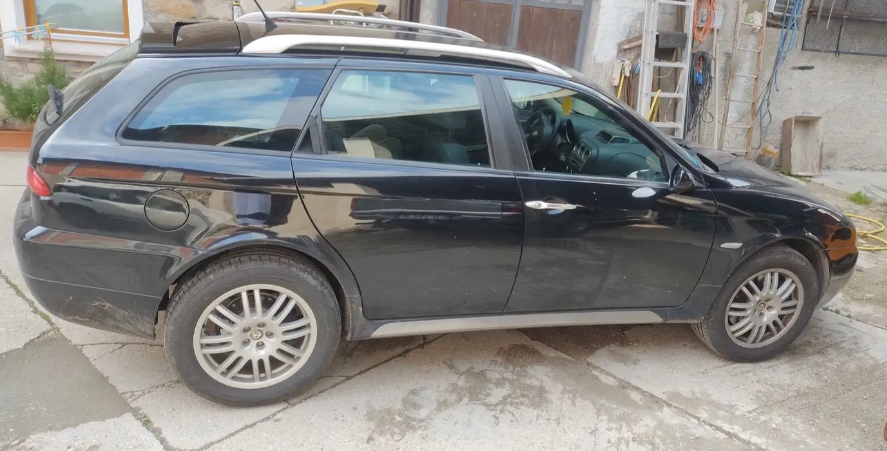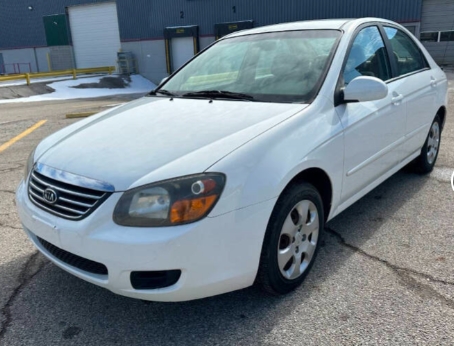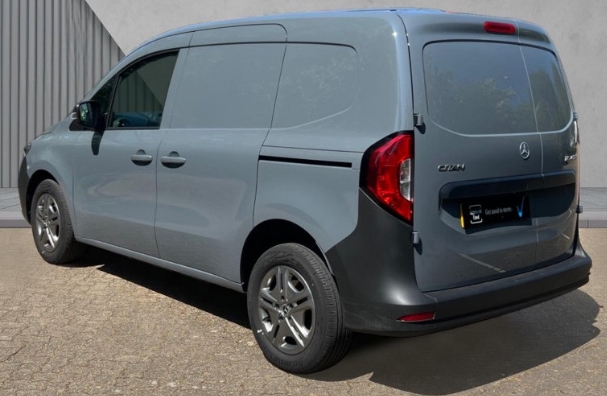The Unconventional Alfa: A Deep Dive into the Alfa Romeo Crosswagon Q4 Evolution
In the rich and often dramatic history of Alfa Romeo, a brand celebrated for its seductive sports cars, elegant saloons, and formidable racing pedigree, certain models stand out as fascinating departures from the norm. They are the footnotes that tell a fuller story, revealing a manufacturer willing to innovate and adapt. One of the most compelling of these is the Alfa Romeo Crosswagon Q4, a vehicle that blended the aesthetic panache of an Italian estate with the rugged, all-weather capability of a true all-wheel-drive system. Produced for a brief but memorable period from 2004 to 2007, the Crosswagon Q4 was Alfa’s answer to a changing automotive landscape, and it remains a cult classic for its unique combination of style, substance, and rarity.
Genesis: The Rise of the Crossover and Alfa’s Strategic Response
To understand the Crosswagon Q4, one must first appreciate the automotive climate of the early 2000s. The traditional market segments were beginning to blur. The sport utility vehicle (SUV) was gaining unstoppable momentum, while premium manufacturers like Audi and Volvo had found remarkable success with their “all-road” estates—the A6 Allroad and V70 Cross Country (later XC70), respectively. These vehicles offered a compelling proposition: the driving dynamics and practicality of a station wagon combined with increased ground clearance and all-wheel-drive traction, providing a sense of security and adventure without the bulk of a full-size SUV.
Alfa Romeo, then under the stewardship of Fiat Group, observed this trend with keen interest. Lacking the resources to develop a dedicated SUV platform from scratch (a project that would eventually culminate in the Stelvio more than a decade later), the company sought a more pragmatic solution. The answer lay in their existing portfolio, specifically the widely acclaimed Alfa Romeo 156.
The 156, penned by Walter de Silva, had been a resounding success since its 1997 launch, praised for its stunning design and engaging front-wheel-drive handling. In 2003, the model received a significant facelift by the legendary Giorgetto Giugiaro, which modernized its front and rear fascias and refined the interior. It was this updated version of the 156 Sportwagon that would serve as the perfect canvas for Alfa’s new all-terrain project. The strategy was clear: leverage a successful, beautiful, and dynamically competent platform to create a niche vehicle that could compete in the burgeoning premium crossover segment.
.
THIS could come in handy for your auto garage (and everywhere else!):

.
The Heart of the Matter: The Sophisticated Q4 All-Wheel-Drive System
The “Q4” designation in the Crosswagon’s name was not mere marketing; it signified a return to a sophisticated permanent all-wheel-drive system with a rich heritage. The Q4 nomenclature first gained fame on the homologation-special Alfa Romeo 155 Q4 of the early 1990s, a rally-bred machine. The system developed for the Crosswagon was a direct evolution, engineered to provide both exceptional traction and the sporty, rear-biased handling dynamics for which Alfa Romeo is known.
At the core of the Crosswagon’s Q4 system were three differentials: a standard open differential on the front axle, another on the rear axle, and a crucial Torsen C self-locking center differential. The Torsen (a portmanteau of Torque-Sensing) C was the mechanical heart of the system. Unlike simpler, electronically-controlled systems of the era which often operated in front-wheel-drive mode until slip was detected, the Crosswagon’s Q4 was a permanent all-wheel-drive setup.
Under normal driving conditions, the Torsen C differential distributed torque with a slight rearward bias, sending approximately 43% to the front axle and 57% to the rear. This inherent rear-bias was key to preserving the agile, communicative feel of a traditional Alfa Romeo, mitigating the understeer commonly associated with all-wheel-drive vehicles. When the system detected a loss of traction at either axle, the Torsen C differential would instantly and seamlessly redistribute torque, sending up to 70% to the axle with the most grip. This mechanical intelligence gave the Crosswagon a tenacious grip on slippery surfaces like snow, gravel, or wet tarmac, transforming the elegant Sportwagon into a genuinely capable all-weather machine.
The Transformation: More Than Just Body Cladding
Creating the Crosswagon Q4 involved more than simply adding the AWD system. Alfa Romeo’s engineers and designers undertook a comprehensive transformation to give the vehicle its unique identity and capability.
Mechanical Modifications:
- Suspension and Ride Height: The most significant change was the revised suspension, which raised the vehicle’s ride height by nearly 6.5 centimeters (2.6 inches) compared to the standard Sportwagon. This provided greater ground clearance for tackling rougher roads and contributed to its commanding stance.
- Engine: The Crosswagon Q4 was offered with a single engine choice: the excellent 1.9-litre JTDm 16v Multijet diesel. This advanced common-rail turbodiesel produced a formidable 150 PS (148 hp) and, more importantly, a substantial 305 Nm (225 lb-ft) of torque. This engine was chosen for its ideal blend of low-end grunt, essential for an all-terrain vehicle, and impressive fuel efficiency. It was mated exclusively to a six-speed manual transmission.
- Wheels and Tires: The car was fitted with unique 17-inch alloy wheels shod in specially developed 225/55 R17 all-season tires, designed to offer a balance of performance on both paved roads and light off-road surfaces.
Aesthetic Enhancements: Drawing inspiration from its German and Swedish rivals, the Crosswagon received a distinctive and rugged exterior treatment.
- Bumpers and Cladding: Unique front and rear bumpers were designed, featuring prominent silver-painted steel inserts that mimicked skid plates.
- Body Protection: The wheel arches and side sills were adorned with tough, unpainted plastic cladding, providing visual muscle and practical protection from stone chips and scrapes.
- Finishing Touches: Stylish steel roof rails and a “Crosswagon Q4” badge on the tailgate completed the external transformation.
Inside, the cabin was largely carried over from the high-specification 156 Sportwagon, boasting a driver-focused layout, sporty instrumentation, and the use of high-quality materials, reinforcing its premium positioning.
The Evolution: Trim Levels and Model Years (2004-2007)
The production of the Alfa Romeo Crosswagon Q4 began in late 2004 and continued until early 2007, when the 156 platform was fully phased out in favour of the new Alfa Romeo 159. Throughout its short production run, the model lineup was refreshingly simple and consistent, primarily revolving around two core trim levels, with a third luxury-focused option available in most markets.
1. Progression (Launch – 2007)
The Progression served as the entry-point to the Crosswagon Q4 range. It was well-equipped for its time but focused on delivering the core capabilities of the model without excessive luxury. Standard features typically included:
- Alfa-Tex cloth upholstery
- Manual air conditioning
- A basic CD/radio audio system
- 17-inch alloy wheels
- Full suite of safety equipment, including front, side, and window airbags, ABS with EBD, and VDC (Vehicle Dynamic Control), Alfa’s advanced stability and traction control system.
- Leather-wrapped steering wheel and gear knob
The Progression was aimed at buyers who prioritized the all-weather functionality and unique styling of the Crosswagon above all else.
2. Distinctive (Launch – 2007)
The Distinctive trim represented a significant step up in comfort, luxury, and technology. It was the more popular choice and elevated the Crosswagon’s interior to match its premium exterior aspirations. Upgrades over the Progression model typically included:
- Full Italian leather upholstery (in classic shades like black, tan, and grey)
- Dual-zone automatic climate control
- Cruise control
- Steering wheel-mounted audio controls
- An upgraded Bose sound system with a subwoofer
- Rain-sensing wipers and an auto-dimming rearview mirror
The Distinctive trim transformed the Crosswagon into a true luxury contender, comfortably equipped for long-distance touring in any weather condition.
3. Luxury / Elegante Pack (Available throughout production)
In many markets, a top-tier package was offered, often badged as Luxury or Elegante, or simply available as a comprehensive options pack for the Distinctive model. This package bundled the most desirable high-end features, such as:
- Satellite navigation system with a colour screen integrated into the center console.
- Xenon headlights with washers.
- Electrically adjustable and heated front seats.
This ultimate specification positioned the Crosswagon Q4 as a direct, feature-for-feature competitor to the highest trims of the Audi Allroad and Volvo XC70.
Throughout its three-year production span, the Crosswagon Q4 saw no significant mechanical or cosmetic changes. The formula established at its 2004 launch remained the sole offering: one engine, one transmission, one body style, and a clear, three-tiered trim structure.
Legacy and Demise
The Alfa Romeo Crosswagon Q4 was a critical success, praised by the automotive press for its brilliant Q4 system, engaging driving dynamics, and inimitable Italian style. It offered a characterful alternative in a market dominated by more clinical German rivals. However, it was never destined to be a high-volume seller. Its launch late in the 156’s lifecycle and the arrival of the all-new, larger Alfa Romeo 159 in 2005 (which soon offered its own Sportwagon Q4 variant) meant the Crosswagon’s time in the spotlight was brief.
By 2007, production ceased. Today, the Crosswagon Q4 is a rare and sought-after vehicle on the used market. It represents a fascinating moment in Alfa Romeo’s history—a clever, well-engineered, and beautifully executed solution to a market challenge. It was a precursor to the modern crossover, a testament to the versatility of the 156 platform, and a perfect embodiment of the Alfa Romeo spirit: practical when it needed to be, but always, unequivocally, driven by passion.







